Rewriting Final Fantasy VII: Part 2
Continuing the reworking of one of gaming's most famous stories
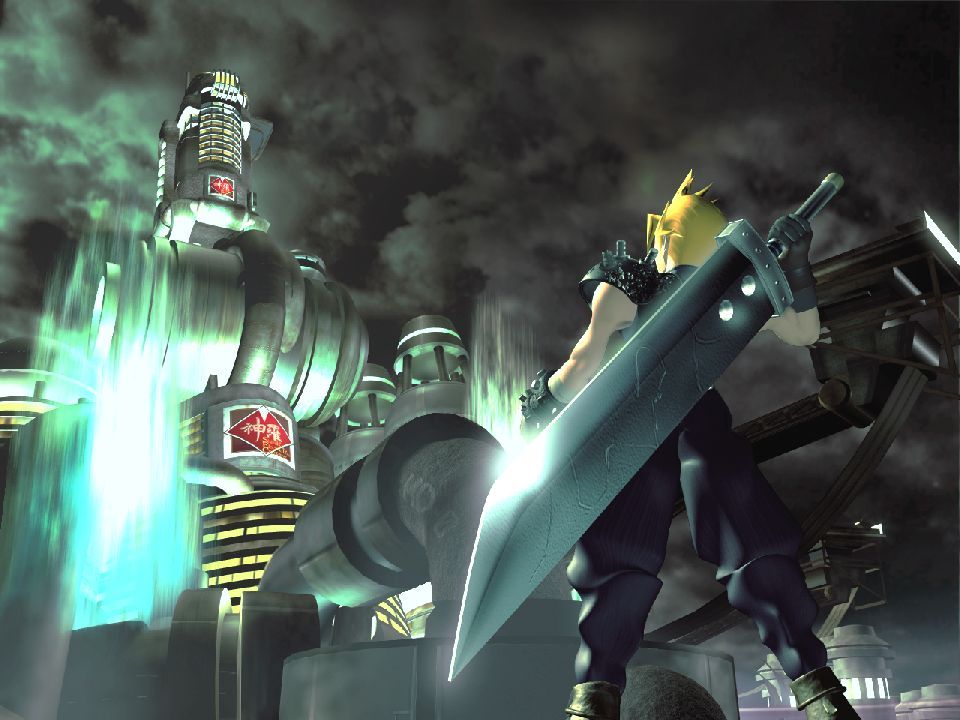
In August, I wrote a story proposing several story changes to the first ten hours of Final Fantasy VII, and despite how that story ended, I really wasn't planning on revisiting it. That was before the Rebirth teaser trailer dropped, and I now feel almost compelled to beat Square Enix to the punch.
Does this mean I'm going to look at the entire game? Hard to say. However, I will be delving into another five or so hours of the game, from Nibelheim to the betrayal at Gold Saucer.
To recap what we did last time:
- Red XIII is out of the game entirely.
- Yuffie and Vincent are now standard, mandatory characters, though only Yuffie has been introduced as of this writing.
- Gold Saucer is now a Shinra property, rather than being owned by an unrelated NPC.
- Barret's backstory has been slightly tweaked, as has the history of Corel. Barret now encouraged the people of Corel to resist Shinra and that's why it was razed.
- Don Corneo is now an unperson because seriously...ugh.
If you have anything to add about today's entry, I invite you to connect with me. I received some interesting feedback last time, and I'm hoping to hear from readers again.
A Brief Note About Retcons
Before we proceed, I'd like to say something about the Compilation of Final Fantasy VII, hereafter referred to as "the Compilation."
For those of you who never heard of the Compilation or have (like Square Enix) forgotten about it: The Compilation was a collection of games and animated shorts set in the FFVII universe, all built around the feature-length CGI film Advent Children. These various media titles constitute the FFVII extended universe, developed in the mid-late 2000s at a time when Square was teasing a full remake while remaining standoffish about whether they were actually planning to do it.
The Compilation significantly changed the story of FFVII in ways both major (i.e. there's a secret city underneath Midgar with a prototype mako reactor and its own army) and minor (i.e. apparently a spiky-haired weirdo fell through Aeris's roof twice and she didn't think that was worth commenting on), and it's a constant question as to whether these changes are canonical. Given that S-E ignored the Compilation for so long, it's easy to assume that they aren't. However, the recent rerelease of Crisis Core - which probably retconned the core story more than any other part of the Compilation - raises that question again.
While I'll be mentioning the Compilation quite a bit in this article, I am proceeding as though the whole metaseries is non-canonical. My writing is solely based on the story as it existed in the game's original release.
Nibelheim
Cloud's return to Nibelheim is one of the major hinge moments of the game's narrative. Before this, Cloud is treated as a reliable narrator, with his memories of Sephiroth being fragmentary but essentially correct. It's here that all of that starts to break down and Cloud's neat narrative frays at the ends, opening up the possibility that everything we've known is wrong.
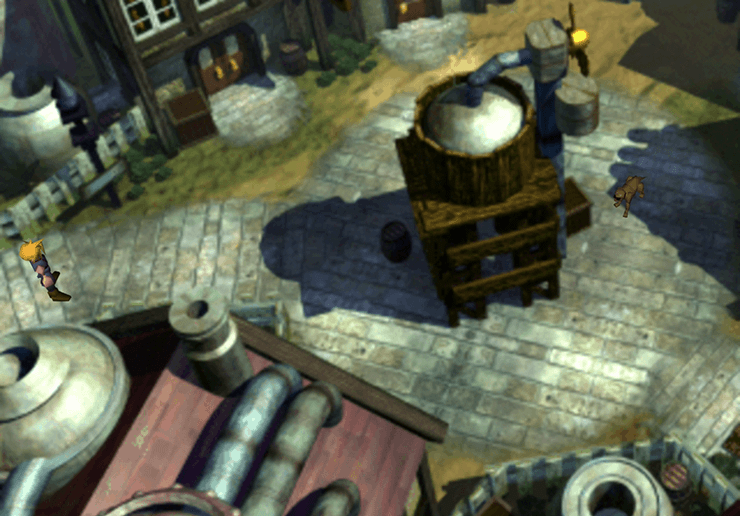
Nibelheim doesn't need any serious narrative repair - every element does its job as intended. As with Midgar, though, Nibelheim could probably benefit from being expanded a bit. This seems to be the approach that Square Enix has taken over the years, with the town, reactor, and (especially) the mansion getting larger. I tend to agree that this is the best approach.
For my purposes, the only wrinkle here is how we bring Vincent into the equation now that he's a standard party member.
Perhaps the least surprising aspect of Square Enix's marketing blitz for the new game is how much attention it throws on Vincent. He was already a popular character when FFVII was new and he remains one of the more beloved figures from the story, equaling (if not surpassing) Cloud and Sephiroth. Vincent is also one of the few elements of the story that got significant attention in the Compilation.
One thing that was explored there (albeit in a fairly shallow way) was a closer connection between Cloud and Vincent. This is something I'd like to lean into in the rewrite.
The Shinra Mansion is now a mandatory dungeon, one that Cloud insists on exploring because he remembers Sephiroth spending a lot of time there, but also because he feels compelled to do so. Vincent is still entombed in one of the labs underneath the mansion, but this time he's even less eager to join up. He is disoriented upon waking but doesn't seem to particularly care that Cloud et. al. are present and begins to roam the mansion and laboratory on his own.
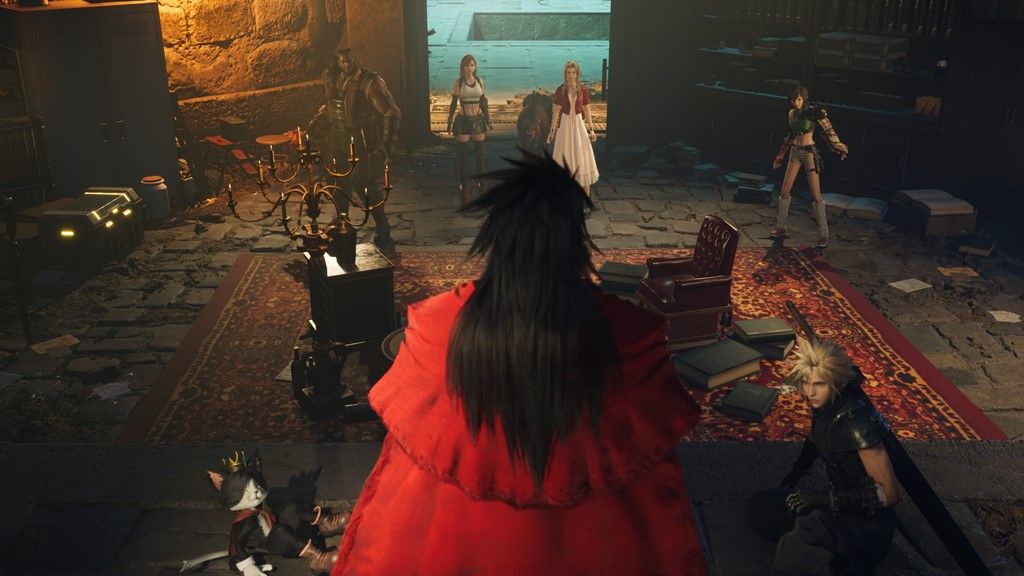
Throughout the dungeon, the party occasionally runs into Vincent and he and Cloud converse briefly. They quickly learn that both were highly-placed members of Shinra, though Vincent points out some inconsistencies in Cloud's story - noting, for example, that there aren't a lot of people who reach SOLDIER First Class and he'd never heard of one named Cloud Strife. Vincent believes Cloud a little more after learning that Cloud is familiar with Hojo.
It's at this point that Vincent asks about Lucrecia. Cloud doesn't recognize the name, but Vincent offers to aid Cloud and the party in exchange for their assistance later. The group is obviously a little bit suspicious about the man affiliated with the Turks who popped out of a coffin, but Cloud talks them into bringing him along.
This situation establishes a relationship between Cloud and Vincent that has a fair amount of friction. Each is in a position to help the other, but each also has reason to believe that the other is lying to him. It's sort of odd that there wasn't more of this kind of tension as Square employed it in previous games, i.e. Tella and Gilbert in FFIV or Cyan and Celes in FFVI.
At this point, we're going to split the party again. Sephiroth's trail has gone cold, with few clues as to where he might go next. Yuffie chimes in, insisting that they need to go chat with her old master in Wutai as she claims he may know something, while also insisting that Cloud still owes her for "saving" him. With nothing else to go on, half of the party accompanies Yuffie back to Wutai while the rest scout the surrounding area for anyone who might have made contact with Sephiroth.
Rocket Town
The area after Nibelheim is another bit of railroading, as there's no particular reason to visit Rocket Town except that it's an RPG and you have money from the last dungeon that you want to spend. We'll certainly not getting rid of it, though, as Rocket Town is home to Cid Highwind, my personal favorite character from the game.
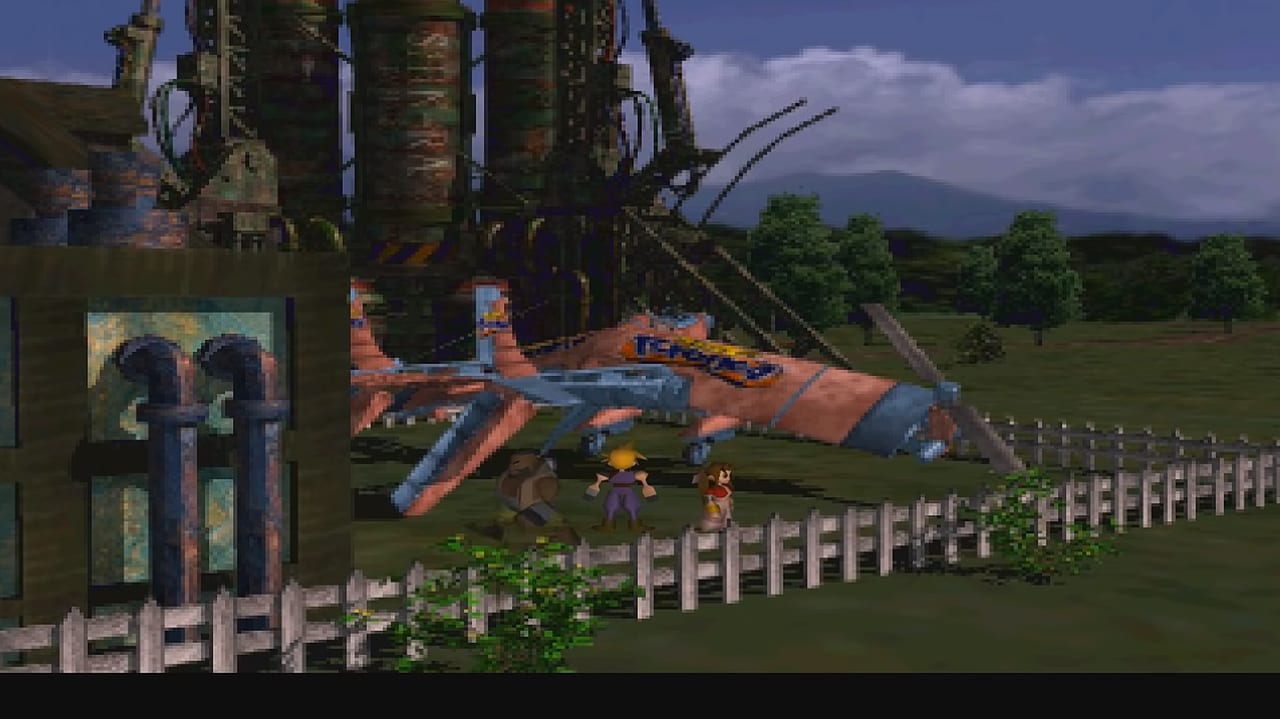
Cid bucks a lot of video game cliches. 90's era JRPGs were notorious for featuring absurdly young characters, and video games in general have always attempted to add "depth" to characters by giving them dark and tragic secrets that they hide at all costs. Cid, meanwhile, is an overt crank. He's a jaded older man (at 32, he's middle-aged by the Logan's Run standards under which these games operate) who is eager to expound at length about all of the people who ruined his dreams.
This prickliness could have made Cid deeply unlikable, but instead it humanizes him. He comes across as far more relatable than the anime stereotypes that tended to populate games of the time.
There is one problem with Cid: He is far too eager to hitch his dreams to Cloud. Like every other playable character, Cid hates Shinra. Unlike every other playable character, he hates them for not doing enough. Cid doesn't want to take Shinra down - if anything, he wants them to prosper so that they might have resources to put back into their space program. And Rufus wanting to use Cid's plane (already a dodgy plot point as Shinra clearly has airships) doesn't seem like enough of a shove to make him abandon his last hope.
Cid has no reason to suspect the party right away. He is a part of Shinra, but only a very small part of a forgotten program existing only in a remote, unimportant part of the world. There's no reason Cid would know about Cloud, AVALANCHE, or anything happening in Midgar. However, it wouldn't take much conversation to figure it out, and once Cid knows the score, he's no longer inclined to help them.
But Cid has reason for hope. There's an unusually large security presence in Rocket Town, which means someone important is visiting - and the only reason anyone important would visit Rocket Town is to restart the program. Since he's about to realize his dreams, Cid isn't going to rock the boat. Alas, the visitor turns out to be Palmer delivering notification that the space program is dead and the rocket is being decommissioned. Hearing the news, Cid snaps and fights his way through the Shinra security personnel in an attempt to stop Palmer's machines from taking the rocket apart.
From there, things proceed as they did originally: Cid and the party escape in the Tiny Bronco, Shinra security shoots it down, and Cid joins with the party in search of retribution. They do have a new destination - they're headed to Wutai to pick up their allies.
Wutai
Wutai is perhaps the most underutilized element in FFVII. It could have just been the obligatory East Asian-themed town, but Square actually infused the place with a lot of interesting political elements recalling Polynesia in the 18th and 19th centuries and the fate of Japan after World War II. They then proceeded to immediately squander this by using Wutai as the backdrop for a "comedic" sidequest featuring Don Corneo, one of the most nauseating characters in video game history.
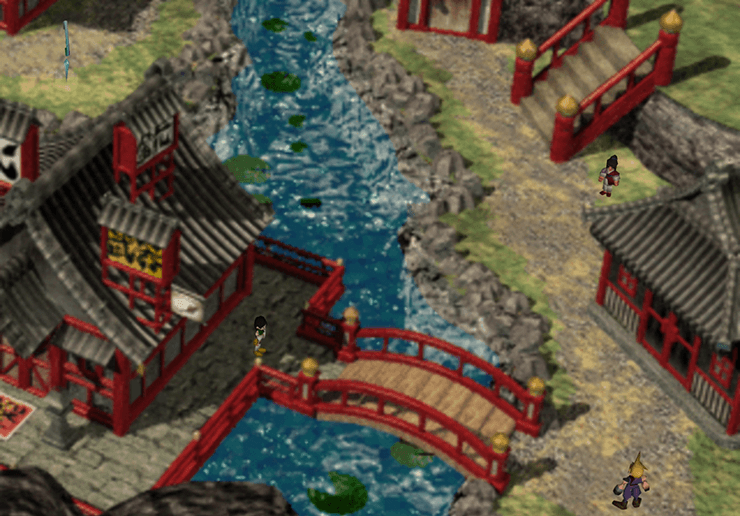
From a late '90s perspective, you can forgive all of this. After all, Yuffie was an optional character who was very easy to miss, meaning that Wutai was going to be just another shopping destination for most people. Why bother with a really detailed and interesting subplot if almost no one sees it?
Of course, Yuffie didn't stay a secret for long - by the month after the game's release, every magazine and website had a guide for unlocking the bonus characters. In the years since Yuffie has turned into a fan-favorite character. She was a significant focus of the Compilation, and yet Wutai is still this vague smudge that people only remember as being Yuffie's home where there was apparently some war that no one felt the need to describe in detail.
So we're going to realize Wutai's full potential by making it a mandatory location. And first, we're dropping that "war" nonsense. Wutai's state is the result of their avoiding conflict.
Wutai was originally very isolated, but they slowly came into contact with Shinra due to the proximity of Shinra shipping lanes. As friction built between the two, the city had a choice: Resist Shinra or appease them. Ultimately those in favor of appeasement won, and Wutai began making concessions. They began as a de facto service port for Shinra, but as Shinra built up its own infrastructure, Wutai lost its logistical importance and was forced to become the giant tourist trap that it is during the game's time frame.
This makes Wutai an interesting contrast to Corel. Corel resisted and was razed; Wutai capitulated and is still physically present, but they've lost their identity and way of life.
There is still a secret resistance in Wutai, headed up by Yuffie's master Goro. Goro concluded from studying Shinra that much of their power comes from their use of materia, and Wutai could have a fighting chance if they had materia as well. He sends Yuffie on a mission to steal materia - a classic element of both espionage and asymmetrical warfare, as stealing an enemy's arms strengthens the good guys and weakens the bad.
The group arrives on the island by sneaking aboard a Shinra cargo ship. Not far outside of the port, they run into a suspiciously strong Shinra security presence. As in the original game, Yuffie robs the party and runs, leading them to Wutai.
Shinra has a very strong presence in Wutai, including all of the Turks - not just the three who were there in the original game, but Tseng as well. As with most ancillary Shinra members, Tseng is pretty underdeveloped, but he is clearly more pragmatic than most of the Shinra people. He is very terse - avoiding any discussion of why the Turks are even there - but he makes it clear that Shinra views Sephiroth as a far bigger problem than AVALANCHE.
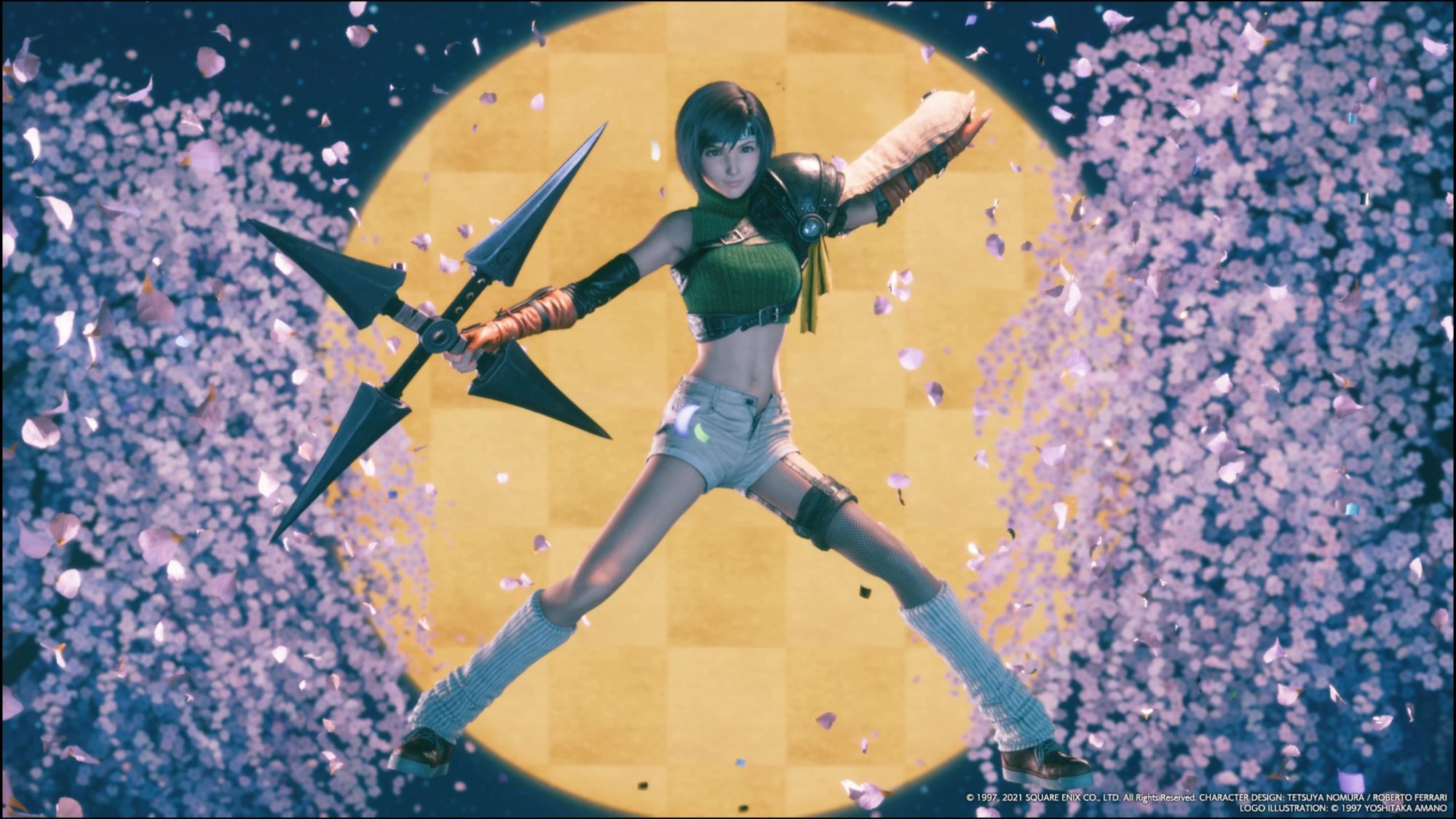
Then Tseng makes an offer: Cloud's people stay out of Shinra's way and the two sides leave each other alone. Part of that deal means departing Wutai and leaving Yuffie to the Turks - implying that they know who she is and that she's a problem for them.
Perhaps not eager to trust the head of the Turks, Cloud turns Shinra down and thus begins a race between the two groups to capture Yuffie first. After various shenanigans, this culminates in Cloud rescuing Yuffie from the Turks. She claims that she only stole the party's materia so that they'd follow her (deciding whether this flimsy excuse is true is an exercise for the player) and brings them to speak with Goro.
With Shinra bearing down on them, Goro keeps it simple: He thinks he knows where both Sephiroth and Shinra are headed. He hands over part of the Keystone, explaining that it's the secret to accessing the Temple of the Ancients, a place said to hold a particularly powerful materia. However, the Keystone is broken and he only has half of it. Recognizing the stone, Yuffie announces that the other half is in a vault back in Gold Saucer.
Cloud et. al. flee from the Shinra forces just in time to spot the Tiny Bronco coming to their rescue. They escape together and head back to Gold Saucer, but not without wondering why Shinra had such a heavy presence in these backwater towns.
Gold Saucer Redux
First, it would be rude of me to remove the dating subplot. Yes, people have been known to make fun of it. However, dating sim-like mechanics have become increasingly common in RPGs over the last few years, so it really seems like Square was a quarter-century ahead of the curve here. What I am going to do is tweak this plot point to remove the story's dependence on serendipity - in this case, a well-timed tram failure.
Cloud and the party return to the Gold Saucer and work up a plan to recover the other part of the Keystone. Vincent proposes that he does this alone - he is technically still a member of the Turks which gives him easy access to the inner chambers, and if stealth is needed then it's easier to sneak around by himself.
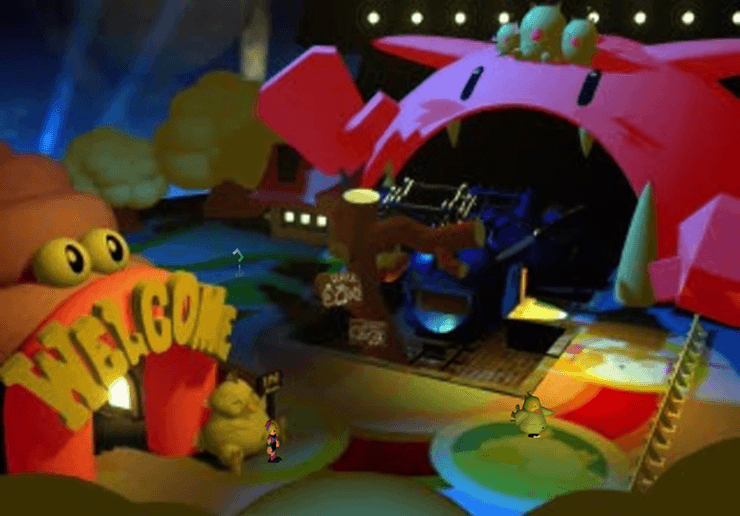
Not everyone is immediately on board with this - Vincent is a shady figure, to begin with, and their recent unexplained run-ins with Shinra security have led everyone to believe that there is a spy among them. Nevertheless, everyone goes along, letting Vincent do the dirty work while the rest enjoy a day off and try to blend in with the tourists.
When Cloud and whomever he was with return to the hotel, they find Vincent incapacitated and both pieces of the Keystone gone. A furious Cloud accuses Vincent of betraying them until one of the other party members spots Cait Sith fleeing the scene. As with the original game, they catch up to Cait Sith just in time to watch him hand over the Keystone, leaving them all facing down a big group of Shinra security and a major decision.
Here we need to talk about Reeve, who got a fair amount of attention in the Compilation but was pretty underdeveloped in the original game. In my version, Reeve is a bit of an idealist but also thoroughly grounded. As he traveled with Cloud and the others, he concluded that they really didn't have a chance of stopping Sephiroth and wanted them to back down for their own good. He was responsible for the small armies present in Rocket Town and Wutai as well as Tseng's involvement, and was really hoping that this would be enough to discourage them.
Reeve/Cait Sith repeat Tseng's offer: Cloud and team quit chasing Sephiroth and Shinra will let them go. The fact that they are currently in a Shinra-run facility surrounded by security personnel is an extra incentive. The only choices are compliance or death.
Cloud rejects the offer again and they fight their way out of the Gold Saucer, temporarily ditching Cait Sith in the process. With no means of accessing the Temple of the Ancients on their own, their only hope is that Shinra will lead them to the Temple and, ultimately, Sephiroth.
How FFVII Tells a Story
I'd like to conclude this by following up on something from the last article. I said that FFVII is best understood as an allegory - that many of its iconic locations make more sense as visual metaphors than as actual locations. But really, when you consider how the story unfolds, it's even broader than that.
All three of the PSX Final Fantasy games are very visual, more so than the rest of the series. This was Square taking advantage of new 3D rendering technology to tell these stories through geography and gestures that weren't possible on older hardware. FFVII is the most pronounced of the three, featuring some of the most gorgeously detailed background art in video game history contrasted with what is - after a lot of study for this series - a fairly skimpy script.
FFVII was an experiment in what these days we'd call "environmental storytelling" - putting the story across through anything other than text. In doing so, they demonstrated both the potential and the limitations of this approach. Put simply, most of the problems I've identified could have been fixed by having the characters talk a little more.
You can really see this when you compare FFVII with FFVIII. My opinion is that the latter game has a much weaker story and a less interesting world than FFVII. However, it also has fewer story gaps than FFVII because Square had refined their new approach to storytelling.
Admittedly, I'm not a neutral observer here. I am a dialogue writer by nature; I feel that when you're telling a story about humans, a social animal, it is appropriate and wise to include the primary means by which humans socialize. And in recent years, I have become increasingly resentful toward the games-as-art types who insist that dialogue is for idiots and that the best stories need to forego it entirely.
There's a lot you can do with environment, but if you're going to go all-in with environmental storytelling then you're going to run into problems with anything but an extremely basic story. Whether you're dealing with complex worldbuilding with a sophisticated culture and history or the byzantine relationships between characters, there are points where you need a narrative and a clear narrative needs words. FFVII probably could have benefitted from having a couple more words to go along with its fantastic music, backgrounds, and character designs.
All of this gets us roughly up to the point where the story kicks into overdrive. I can't promise a part 3, and really it gets harder from here. The plot for the next few hours of the game (which I believe will run through the part covered in Rebirth) is very integral and hard to tweak without changing it outright. But who knows? Keep an eye out - there may be more coming.
